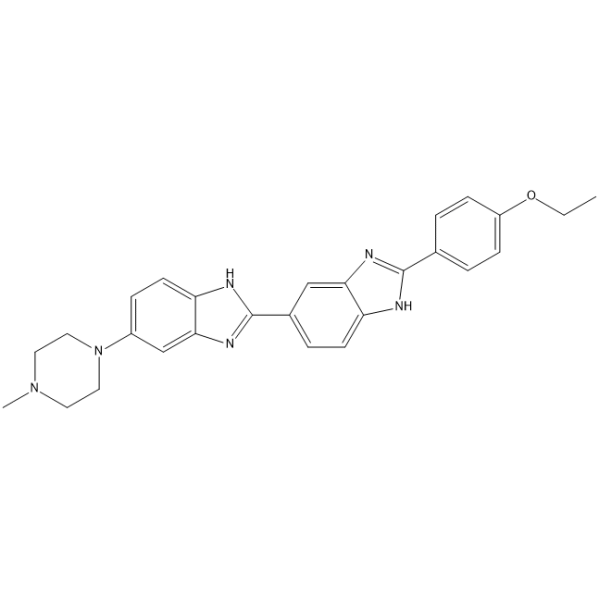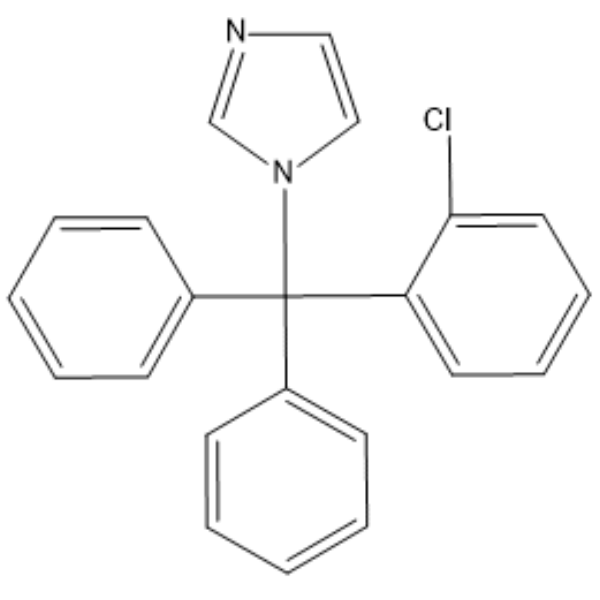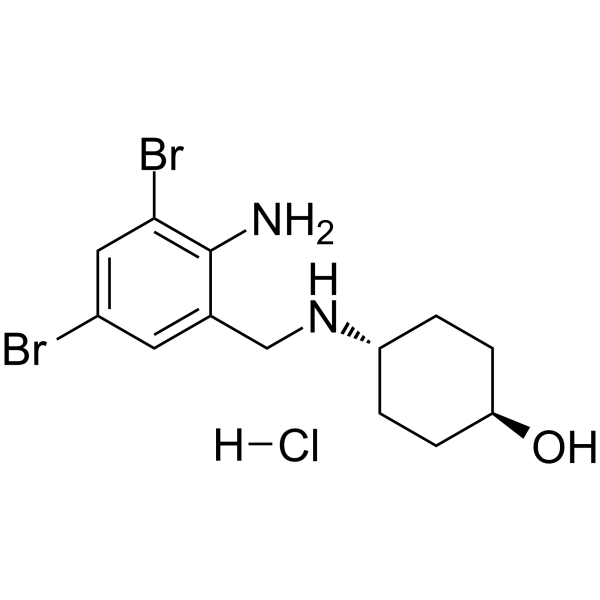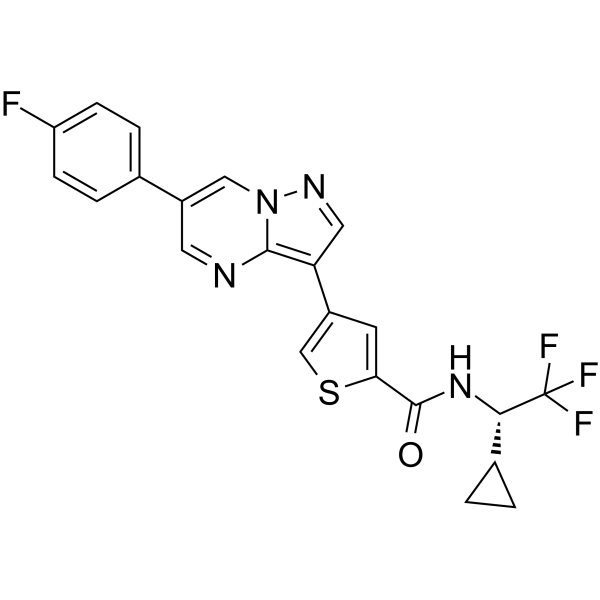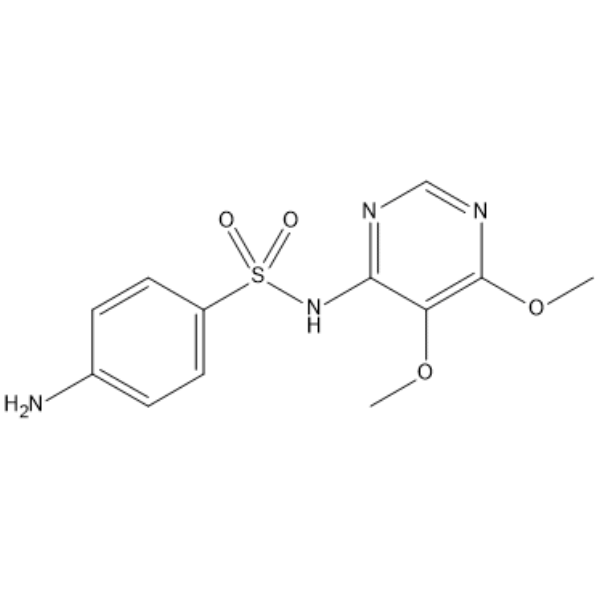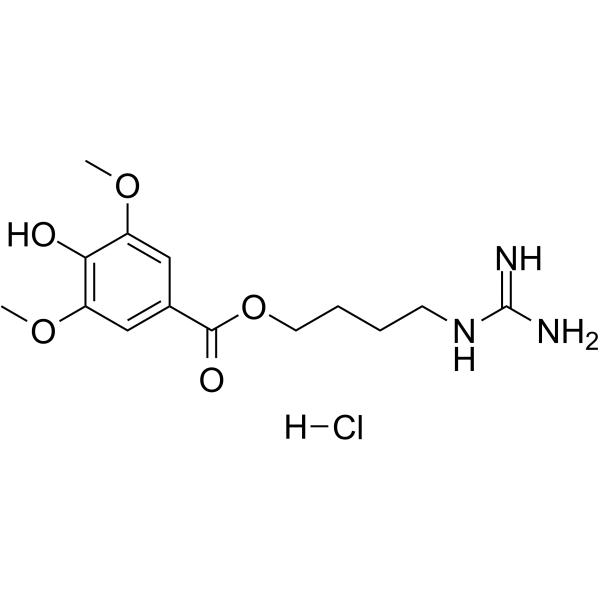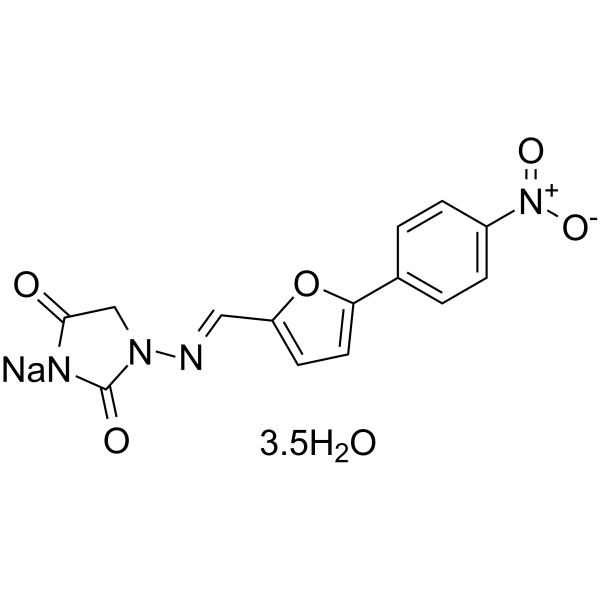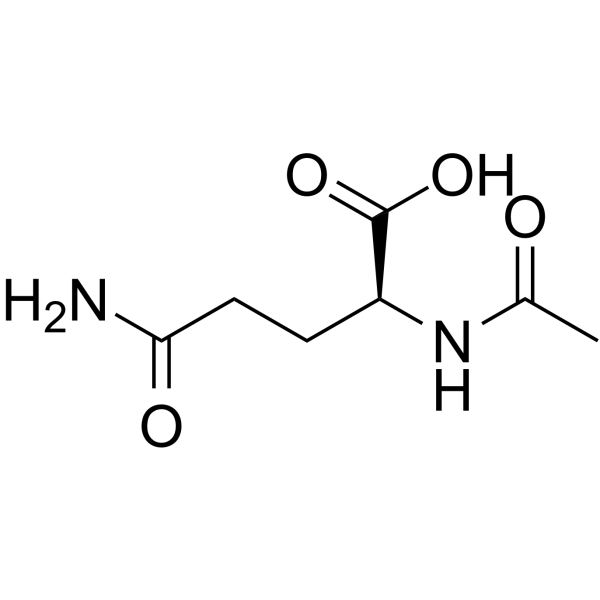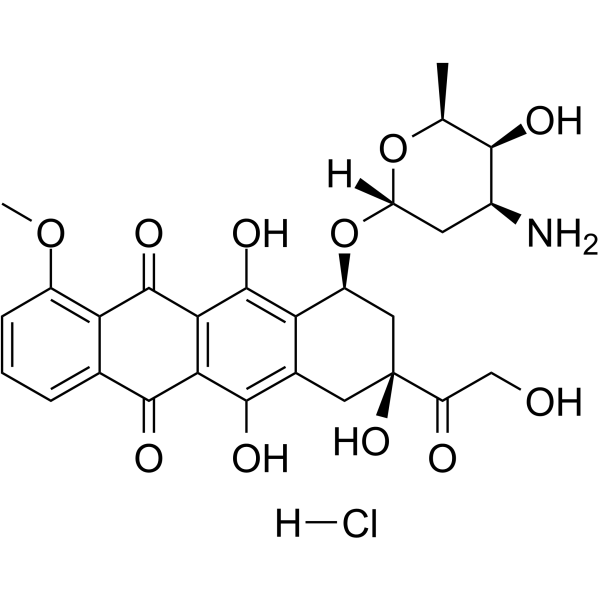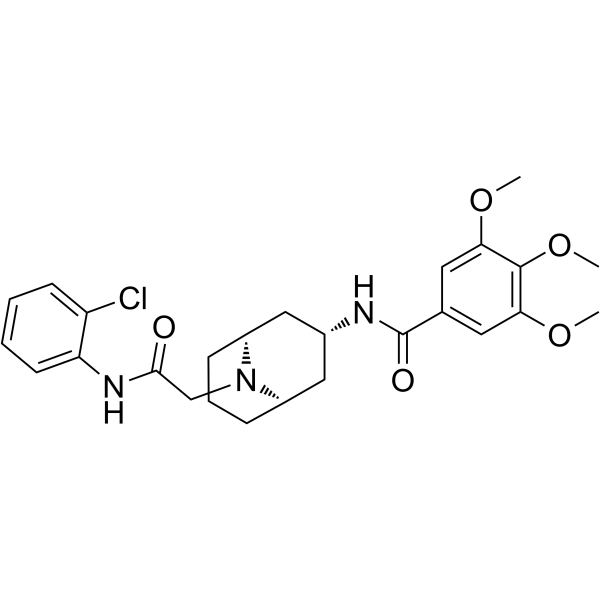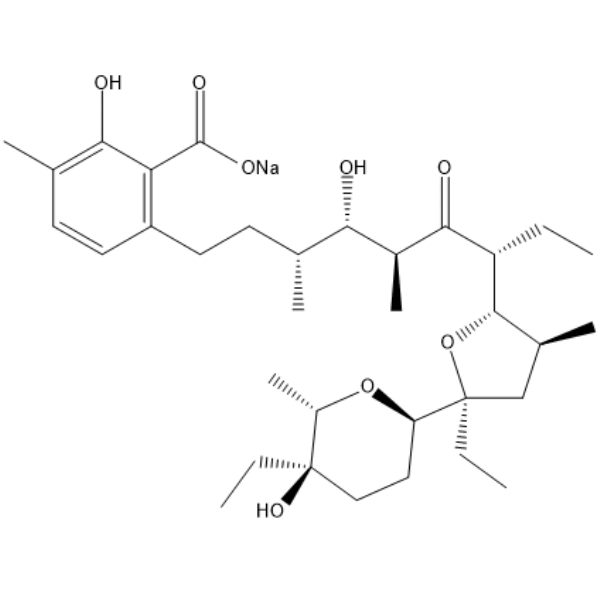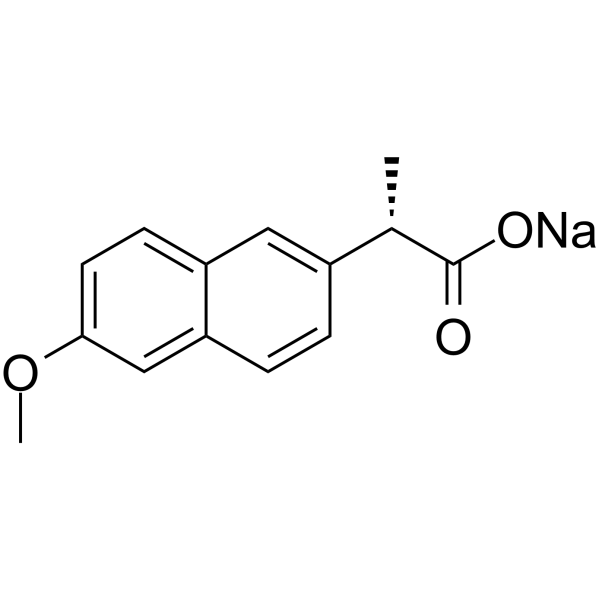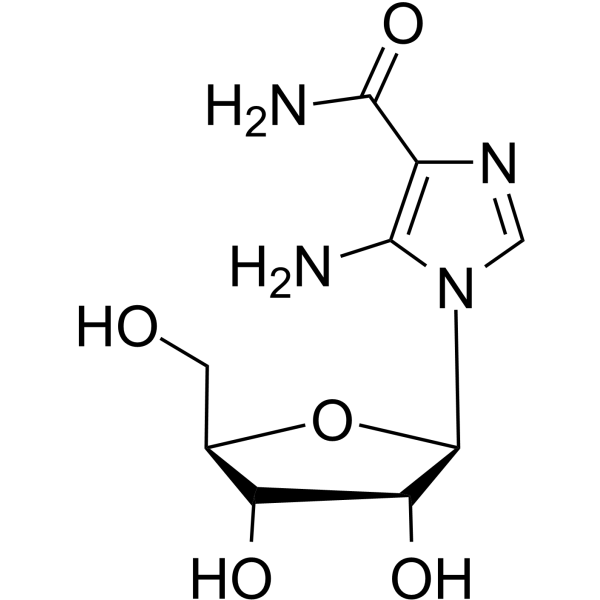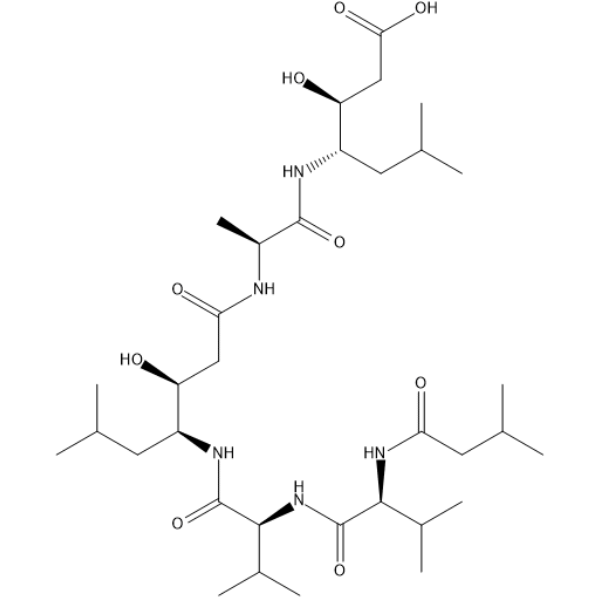|
BP12578
|
FERULIC ACID METHYL ESTER
|
|
|
|
|
Ferulic acid is a hydroxycinnamic acid that is abundant in plants and originally derived from giant fennel (F. communis). This naturally-occurring phenolic has antioxidant activities that provide protection against inflammation and cancer. Ferulic acid methyl ester is a lipophilic derivative of ferulic acid, demonstrating increased ability to cross cell membranes.
|
|
BP12579
|
Hoechst 33342
|
|
|
|
|
Hoechst 33342, is a Benzimidazole fluorescent dye and a Cell permeable fluorescent DNA stain; binds minor groove of AT-rich regions. HOE 33342 trihydrochlorde is used to quantify DNA in viable cells.
|
|
BP12580
|
Clotrimazole
|
|
|
|
|
Clotrimazole, an imidazole derivative with a broad spectrum of antimycotic activity, inhibits biosynthesis of the sterol ergostol.
|
|
BP12581
|
4,4'-Dimethoxychalcone
|
|
|
|
|
4,4-Dimethoxychalcone is a natural product.
|
|
BP12582
|
Autogramin-2
|
|
|
|
|
Autogramin-2 potently inhibits autophagy induced by either starvation with IC50 of 0.27 μM, and inhibits mTORC1 (Rapamycin; IC50:0.14 μM)
|
|
BP12583
|
Autogramin-1
|
|
|
|
|
Autogramin-1 potently inhibits starvation-induced autophagy with IC50 of 0.17 μM. Autogramin-1 also inhibits Rapamycin (mTORC1)-induced autophagy with IC50 of 0.44 μM.
|
|
BP12584
|
Ambroxol hydrochloride
|
|
|
|
|
Ambroxol hydrochloride is a metabolite of BROMHEXINE that stimulates mucociliary action and clears the air passages in the respiratory tract. It is usually administered as the hydrochloride.
|
|
BP12585
|
CA77.1
|
|
|
|
|
CA77.1(CA) is a novel chaperon-mediated autophagy (CMA) activator for the treatment of Alzheimer's disease (AD).
|
|
BP12586
|
ULK-101
|
|
|
|
|
ULK-101 is a potent and selective ULK1 inhibitor ( IC50s: 8.3/30 nM for ULK1/ULK2). It can suppress autophagy.
|
|
BP12587
|
Sulfadoxine
|
|
|
|
|
Sulfadoxine is a broad-spectrum sulfanilamide and a synthetic analog of para-aminobenzoic acid (PABA) with bacteriostatic and antimalarial properties.
|
|
BP12588
|
Leonurine hydrochloride
|
|
|
|
|
Leonurine (hydrochloride), a major alkaloid compound extracted from Leonurus japonicas Houtt. (Labiatae), is considered to have antitumor roles.
|
|
BP12589
|
Dantrolene sodium hemiheptahydrate
|
|
|
|
|
Dantrolene depresses excitation-contraction coupling in skeletal muscle by binding to the ryanodine receptor 1 and decreasing intracellular calcium concentration. Ryanodine receptors mediate the release of calcium from the sarcoplasmic reticulum, an essential step in muscle contraction. Dantrolene Sodium is the sodium salt form of dantrolene, a hydantoin derivative, and direct-acting skeletal muscle relaxant.
|
|
BP12590
|
Aceglutamide
|
|
|
|
|
Aceglutamide is an acetyl derivative of the amino acid L-glutamine, used to improve memory.
|
|
BP12591
|
CHIR-99021
|
|
|
|
|
CHIR-99021 is a GSK-3α/β inhibitor (IC50: 10/6.7 nM).
|
|
BP12592
|
Doxorubicin hydrochloride
|
|
|
|
|
Doxorubicin intercalation between base pairs in the DNA helix, thereby preventing DNA replication. It also inhibits topoisomerase II.
|
|
BP12593
|
ML339
|
|
|
|
|
ML339 a selective inhibitor of CXCR6(IC50 = 140 nM) with no response when screened against CXCR5 and CXCR4.
|
|
BP12594
|
Lasalocid sodium
|
|
|
|
|
Lasalocid sodium is a cationic ionophore antibiotic obtained from Streptomyces lasaliensis that, among other effects, dissociates the calcium fluxes in muscle fibers. Lasalocid sodium is used as a coccidiostat, especially in poultry.
|
|
BP12595
|
Naproxen sodium
|
|
|
|
|
Naproxen is a COX inhibitor for COX-1 and COX-2 with analgesic and antipyretic properties.
|
|
BP12596
|
AICAR
|
|
|
|
|
Acadesine is an AMP-activated protein kinase activator which is used for the treatment of acute lymphoblastic leukemia and may have applications in treating other disorders such as diabetes.
|
|
BP12597
|
Pepstatin
|
|
|
|
|
Pepstatin is a specific aspartic proteases inhibitor produced by actinomycetes, and inhibits the aspartic proteases cathepsin D, pepsin and renin.
|

